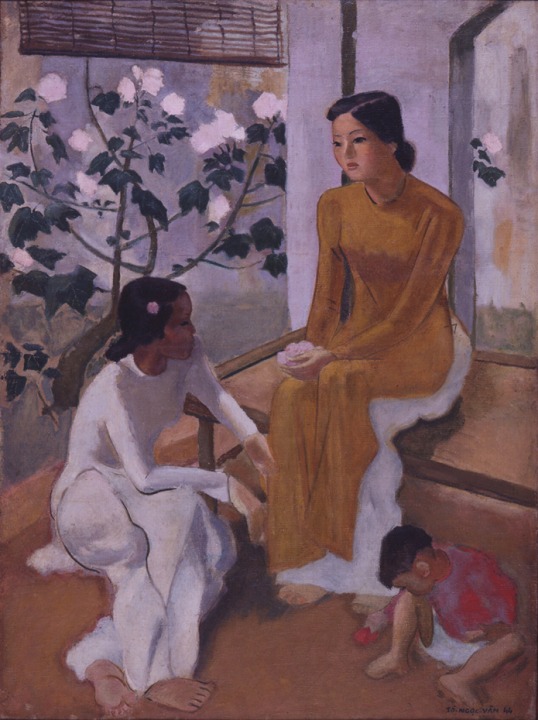Indochina School of Fine Arts
Pedagogy of French Art and Traditional Techniques
In 1925, the École des Beaux-Arts de l’Indochine (Indochina School of Fine Arts; now Vietnam University of Fine Arts) was founded in Hanoi, which was already the center of France’s colonial rule in Indochina. Impressionist artworks were introduced at the school by some of its French teachers such as Victor Tardieu (1870–1937) and Joseph Inguimberty (1896–1971); its students included Vietnamese artists such as To Ngọc Van (1906–1954), Le Pho (1907–2002), and Luong Xuan Nhị (1913–2006). These artists borrowed the fresh styles of Western painting to depict ordinary Vietnamese people in a peaceful and delicate way. Amid rising nationalism, artists also reevaluated silk and lacquer painting, seeing them as Vietnamese traditions in which they could seek originality. Nguyen Phan Chanh (1892–1984) and Nguyen Gia Tri (1908–1993) used modern poetic expression to depict the everyday lives of ordinary people, establishing silk and lacquer painting as forms of modern art. Another unique Vietnamese form of expression can be seen in oil paintings made using a soft style reminiscent of silk painting. However, the French-style modern art movement centered around the School of Fine Arts declined following the outbreak of the First Indochina War in 1946 and was gradually replaced, over the many years of conflict, by Socialist Realism.

To Ngoc Van "Two Girls and a Baby" 1944 oil on canvas

Nguyen Phan Chanh "To Play O An Quan" 1931 watercolor on silk
